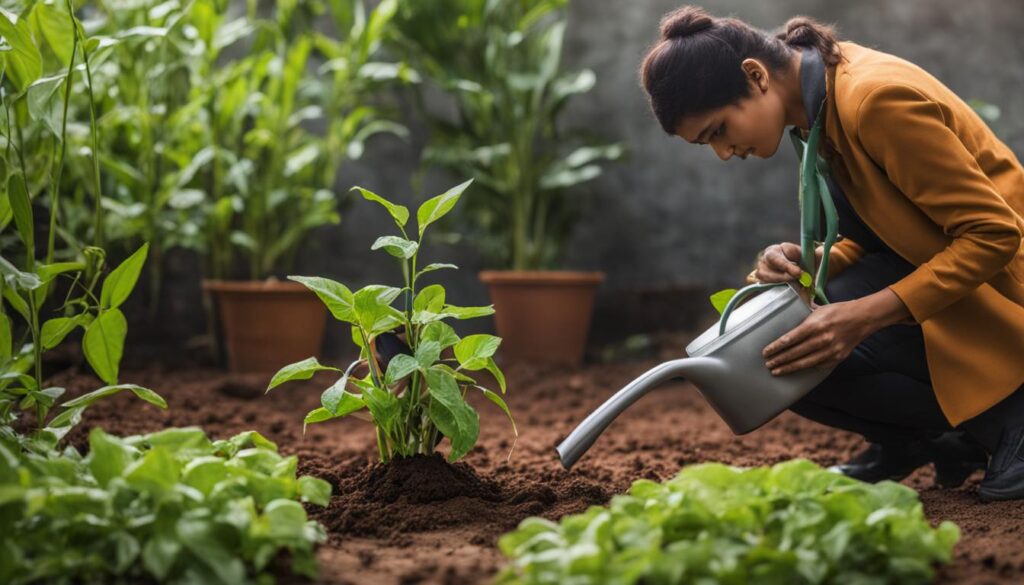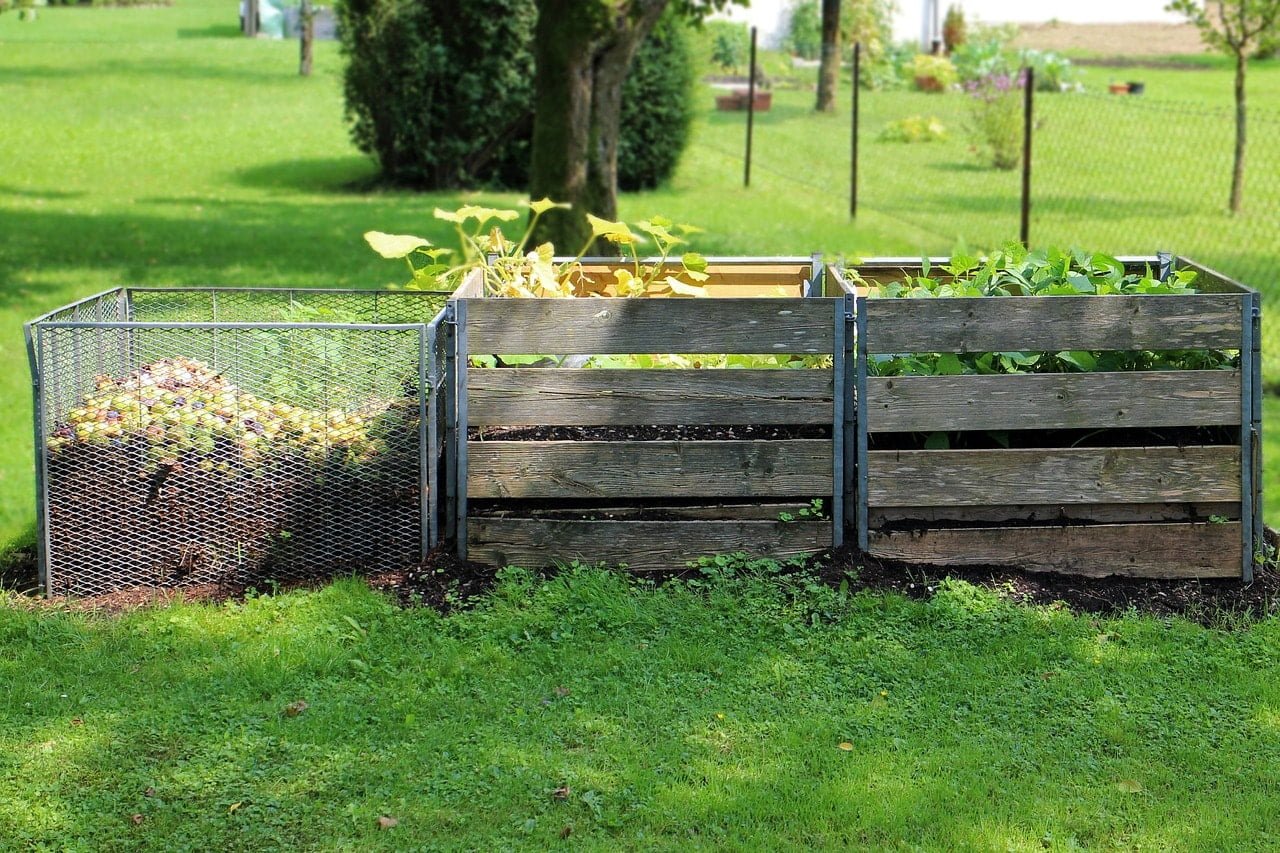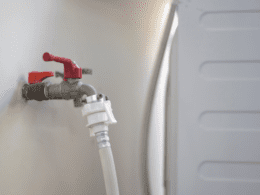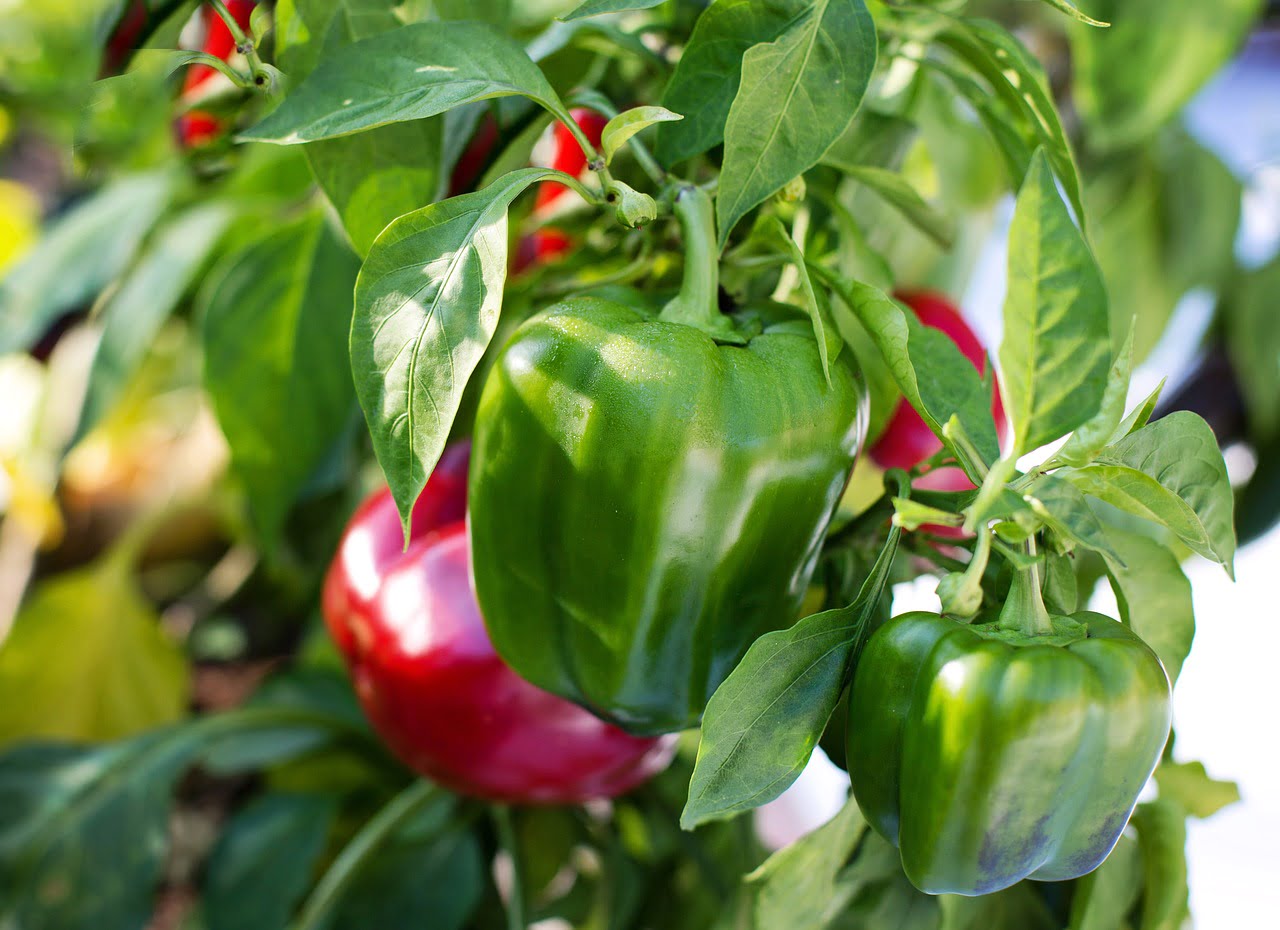If you’re an avid gardener, you know that providing nutrients to your plants is essential for their growth and overall health. However, it’s important to strike a balance when it comes to fertilization. Over fertilizing your garden can lead to various symptoms that indicate an imbalance in nutrient levels. These symptoms can be similar to those caused by overwatering, but they occur quickly after fertilizing.
Recognizing the signs of over fertilization is crucial in order to address the issue and restore your garden’s health. By understanding the symptoms and taking appropriate action, you can ensure that your plants receive the right amount of nutrients they need to thrive.
Post Summary
- Over fertilization in gardens can lead to imbalances in nutrient levels, causing various symptoms.
- Recognizing the signs of over fertilization is important for addressing the issue and restoring plant health.
- Symptoms of over fertilization can be similar to those of overwatering, but they occur quickly after fertilizing.
- It is crucial to always read and follow label directions when applying fertilizers to avoid over fertilization.
- By maintaining a balanced fertilization approach, you can ensure your garden remains healthy and thriving.
Why Plants Need Fertilizer
Plants require fertilizer to thrive and achieve optimal growth. This is because most soil naturally lacks the essential nutrients that plants need. As plants grow, they absorb nutrients from the soil, gradually depleting its fertility. Fertilizer supplements the soil by providing these essential nutrients, ensuring that plants have access to the resources they need for healthy growth and development.
Without sufficient nutrients, plants may experience stunted growth, yellowing leaves, poor fruit or flower production, and overall diminished health. Fertilizer helps replenish the nutrient levels in the soil, promoting robust root development, lush foliage, vibrant blooms, and bountiful harvests.
By supplying plants with the necessary nutrients, fertilizers support their growth cycles, from seed germination to maturity. These nutrients, such as nitrogen, phosphorus, and potassium, play vital roles in various plant processes, including photosynthesis, root formation, and the production of proteins and enzymes. Therefore, using fertilizers judiciously ensures that plants have access to the nutrients they require for optimal growth and overall vitality.
Why Nutrients are Essential
Each nutrient provided by fertilizer serves a specific purpose in supporting plant growth:
- Nitrogen: Essential for leaf and stem growth. Promotes vibrant green foliage.
- Phosphorus: Encourages root development and flowering. Enhances fruit and seed formation.
- Potassium: Regulates water and nutrient uptake. Enhances overall plant vigor and disease resistance.
- Calcium: Strengthens cell walls, preventing diseases and disorders.
- Magnesium: Key component of chlorophyll, essential for photosynthesis.
- Sulfur: Essential for protein synthesis and enzyme activity.
These essential nutrients, along with others like iron, manganese, and zinc, work together to support plant growth, development, and overall health. Fertilizers provide a convenient and efficient way to ensure that plants receive the necessary nutrients they require for optimal growth and vitality.
Effects of Over Fertilizing Plants
Over fertilizing plants can have detrimental effects on their overall health and growth. When excessive amounts of fertilizer are applied, it can interfere with the plant’s ability to absorb water effectively. Water absorption is crucial for plants as it allows them to obtain the necessary nutrients and maintain proper hydration. However, over fertilizing disrupts this process and can lead to imbalances in osmotic pressure within the plant.
This imbalance in osmotic pressure can cause the flow of water to reverse, leading to water being drawn out of the plant instead of being absorbed. As a result, the leaves may start to show signs of burn and stress. The excessive accumulation of dissolved solids in the soil can also lead to nutrient imbalances and toxicity, further impacting the plant’s health.
Effects of Over Fertilizing Plants:
- Burning of leaves
- Stressed plant
- Impaired water absorption
- Imbalances in osmotic pressure
- Nutrient imbalances and toxicity
To avoid these negative effects, it is important to adopt a more moderate fertilization approach. Instead of occasional heavy applications, opt for frequent, moderate fertilization to maintain consistent nutrient levels in the soil. Additionally, always follow the recommended dosage and application instructions provided on the fertilizer label. By being mindful of the amount of fertilizer used and the plant’s specific needs, you can help ensure their optimal health and growth.
Environmental Impact of Over Fertilization
Excess nutrients from fertilizers can have a significant environmental impact, especially when they leach into the ground water, rivers, and oceans. This can lead to ground water contamination and water pollution, posing a threat to aquatic ecosystems and the overall environment. The cumulative effect of excessive fertilizer use by individual gardeners and farmers can be detrimental to the health of our water sources.
Ground water contamination caused by over fertilization is a serious concern due to the potential harm it can cause to both humans and wildlife. Excess nutrients, such as nitrogen and phosphorus, can lead to the growth of harmful algal blooms in bodies of water. These blooms can deplete oxygen levels, leading to fish kills and the destruction of aquatic habitats. Additionally, the release of excess nutrients into oceans can contribute to the formation of dead zones, where oxygen levels are too low to support marine life.
To minimize the environmental impact of over fertilization, it is important to use fertilizers judiciously and follow recommended application rates. Avoid applying more fertilizer than necessary, as the excess can easily wash away into the environment during heavy rainfall or irrigation. It is also important to be aware of the specific nutrient needs of your plants and soil, and to choose fertilizers that provide the necessary nutrients without contributing to excess levels in the environment.
| Environmental Concerns | Effects |
|---|---|
| Ground Water Contamination | Water pollution, harmful algal blooms, fish kills |
| Dead Zones | Lack of oxygen, marine life destruction |
“We have a responsibility to protect our environment by using fertilizers in a responsible and sustainable manner. By understanding the potential environmental impact of over fertilization and taking steps to minimize it, we can contribute to the preservation of our natural resources.”
By being mindful of the environmental consequences of over fertilization and adopting sustainable gardening practices, we can ensure the health and longevity of our ecosystems. It is crucial to prioritize the balance between plant nutrition and environmental preservation, contributing to a greener and more sustainable future.
How to Save Over Fertilized Plants
If you realize that you have over fertilized your plants, there are steps you can take to save them. One method is to leach the excess fertilizer from the soil by thoroughly watering the plants and allowing the water to drain out the bottom of the pot or root zone. This process helps to flush out the excess nutrients and restore a healthier balance in the soil. It may need to be repeated multiple times if the over fertilization is severe.
Additionally, it is important to remove any wilted or burned leaves. These damaged leaves are no longer able to contribute to the plant’s growth and can even hinder its recovery. By removing them, you allow the plant to focus its energy on regenerating healthy foliage. Be careful not to remove too many leaves, as this can stress the plant further.
It is crucial to stop fertilizing the plant immediately and reconsider the amount of fertilizer being used. Over fertilization can occur when too much fertilizer is applied or when fertilizer is applied too frequently. By adjusting your fertilization practices, you can prevent future over fertilization and promote the overall health of your plants.
Table 5: Recommended Steps for Saving Over Fertilized Plants
| Steps | Description |
|---|---|
| 1 | Leach excess fertilizer |
| 2 | Thoroughly water the plants |
| 3 | Remove wilted or burned leaves |
| 4 | Stop fertilizing |
| 5 | Adjust fertilization practices |
With prompt action and proper care, there is a good chance of saving the over fertilized plants. By implementing these steps and paying attention to your plant’s recovery, you can help them regain their health and thrive once again.
Over-Fertilization of Potted Plants
Over-fertilization of potted plants can lead to an accumulation of soluble salts in the potting medium, posing a risk to the plants’ root health. These soluble salts can create an unfavorable environment for roots, hindering their ability to absorb water effectively. As a result, the flow of water into the roots slows down, causing symptoms such as yellowing and wilting of lower leaves, browning leaf tips and margins, and even defoliation.
To prevent root damage from over-fertilization, it is important to manage fertilizer levels and ensure proper drainage in potted plants. Avoid applying excessive amounts of fertilizer and always follow the recommended dosage. Additionally, choose a well-draining potting mix that allows excess water to flow out easily, preventing the salts from accumulating in the root zone.
Regularly monitoring the salt levels in the potting medium is essential for preventing over-fertilization. By using a conductivity meter, you can measure the salt concentration in the medium and ensure it stays within acceptable levels. Different plants may have varying tolerance for salts, so it’s important to understand the specific requirements of each plant species.
Symptoms of Over-Fertilization in Potted Plants
| Symptoms | Description |
|---|---|
| Crust of fertilizer on the soil surface | Visible layer of fertilizer residue on top of the potting medium |
| Yellowing and wilting of lower leaves | Leaves turning yellow and becoming limp |
| Browning leaf tips and margins | Browning and drying out of leaf edges |
| Defoliation | Loss of leaves, starting from the lower parts of the plant |
By carefully managing fertilizer application, choosing the right potting mix, and monitoring salt levels, you can prevent over-fertilization and ensure the health and vitality of your potted plants.
Measuring Soluble Salt Levels
To determine the soluble salt concentration in your soil or potting medium, you can use a conductivity meter, which measures the conductivity of the solution. The higher the conductivity reading, the higher the salt concentration. This method provides the most accurate measurement of salt levels and allows you to monitor the health of your plants effectively.
Another method involves creating a water-saturated paste of the potting medium and extracting the liquid. Then, you can measure the conductivity of this liquid to estimate the soluble salt concentration. While this method is not as precise as using a conductivity meter, it can still provide valuable information about the salt levels in your soil.
It is important to note that acceptable levels of conductivity vary depending on the type of growing medium and the specific crop being cultivated. You can refer to guidelines provided by agricultural extension offices or consult with local experts to determine the appropriate range for your plants. Regularly measuring soluble salt levels will help you ensure that your plants receive optimal nutrition and avoid the negative effects of over-fertilization.
Acceptable Conductivity Ranges for Common Crops
| Crop | Acceptable Conductivity Range (mS/cm) |
|---|---|
| Lettuce | 1.5-3.0 |
| Tomatoes | 2.0-4.0 |
| Peppers | 2.5-4.5 |
| Cucumbers | 3.0-5.0 |
“Measuring soluble salt levels is essential for maintaining healthy plants. By regularly monitoring conductivity, you can ensure that your plants are receiving the right amount of nutrients without risking over-fertilization.” – Plant Care Expert
- Use a conductivity meter to accurately measure salt levels.
- Create a water-saturated paste of the potting medium and measure the liquid’s conductivity as an alternative method.
- Refer to acceptable conductivity ranges for specific crops to determine optimal salt levels.
- Monitor soluble salt levels regularly to avoid over-fertilization and maintain plant health.
Managing Over-Fertilization
When it comes to managing over-fertilization, one essential tool is a conductivity meter. This device measures the salt levels in the growing medium, providing valuable information about the concentration of nutrients in the soil or potting mix. By regularly monitoring the conductivity readings, you can identify when salt levels are excessive and take appropriate action to correct the imbalance.
Leaching is an effective technique for managing over-fertilization. By adding enough water to the root zone, excess fertilizer can be flushed out, reducing the concentration of salts in the soil or potting medium. This process helps restore a healthy balance of nutrients and prevents further damage to the plants. It is important to ensure proper drainage to facilitate leaching and avoid waterlogging, which can lead to other complications.
In addition to using a conductivity meter and practicing leaching, proper fertilizer use is crucial in managing over-fertilization. Avoid mixing slow-release fertilizers with soluble fertilizers unless you are confident in the correct amount to use. Follow the recommended application rates and timing provided on the fertilizer label. By applying the appropriate amount of fertilizer at the right time, you can promote healthy plant growth without risking over-fertilization.
Benefits of Managing Over-Fertilization:
- Prevents nutrient imbalances that can harm plant health
- Reduces the risk of environmental pollution from excess fertilizer runoff
- Improves the overall sustainability of gardening practices
- Preserves the long-term fertility of the soil or potting medium
- Saves time and money by avoiding unnecessary fertilizer applications
By adopting these practices, you can effectively manage over-fertilization and maintain a healthy garden or potted plants. Remember to monitor salt levels, practice leaching when necessary, and use fertilizers properly to ensure the well-being of your plants and the environment.
| Conductivity Readings | Plant Health | Possible Action |
|---|---|---|
| Low | Unhealthy | Increase fertilizer application |
| Medium | Healthy | Maintain current fertilizer application |
| High | Unhealthy | Reduce fertilizer application and leach the soil |
Conclusion
Over-fertilization in gardens can have detrimental effects on plant health and the environment. It is crucial to be mindful of the amount of fertilizer applied and to regularly monitor salt levels in the soil or potting medium. By following proper fertilization practices, such as leaching and using appropriate amounts of fertilizer, you can maintain a healthy and thriving garden.
Recognizing the symptoms of over-fertilization is important in order to address the issue and restore your garden’s health. Signs of over-fertilization are similar to overwatering, but they occur quickly after fertilizing. Plants may show burning leaves, stress, and wilting. By understanding these symptoms, you can take prompt action to save your over-fertilized plants.
Furthermore, it is essential to consider the environmental impact of over-fertilization. Excess nutrients from fertilizers can leach into the groundwater, rivers, and oceans, leading to water pollution. To minimize environmental concerns, it is important to be mindful of the amount of fertilizer applied and to use it responsibly.
In conclusion, proper garden care involves being mindful of fertilization practices and the impact they have on plant health and the environment. By understanding the symptoms of over-fertilization, managing fertilizer levels, and monitoring salt concentrations, you can ensure your garden thrives while minimizing any negative effects.
Can Using Too Much Fertilizer Lead to Over Fertilization Garden Symptoms?
Over-fertilization garden symptoms, caused by using too much fertilizer versus plant food, include stunted growth, yellowing leaves, and burnt roots. Excess nutrients can harm plants and disrupt the soil ecosystem. Follow guidelines for proper application to avoid over-fertilizing and damaging your garden.
FAQ
What are the symptoms of over fertilization in gardens?
Signs of over fertilization include leaf burning, leaf stress, and rapid occurrence of symptoms after fertilizing.
Why do plants need fertilizer?
Plants need fertilizer because most soil lacks the essential nutrients necessary for optimal growth. Fertilizer supplements the soil by providing these essential nutrients and promoting healthy plant growth.
How does over fertilization affect plant health?
Over fertilization can hinder water absorption by plants, leading to leaf burning and overall plant stress.
What is the environmental impact of over fertilization?
Excess nutrients from fertilizers can pollute ground water, rivers, and oceans, causing water pollution and environmental concerns.
What can I do to save over fertilized plants?
To save over fertilized plants, leach the excess fertilizer from the soil by thorough watering and drainage, remove wilted or burned leaves, and reconsider the amount of fertilizer being used.
How does over-fertilization affect potted plants?
Over-fertilization in potted plants can result in high concentrations of soluble salts, which can damage roots and lead to wilting, browning of leaves, and defoliation.
How can I measure soluble salt levels?
The most accurate method is using a conductivity meter, which measures the ability of a current to flow through a solution. Another method involves creating a water-saturated paste of the potting medium and measuring the conductivity of the extracted liquid.
How can I manage over-fertilization?
Routinely use a conductivity meter to monitor salt levels, avoid over-fertilizing by leaching out excess fertilizer, and ensure proper drainage. Do not mix slow-release fertilizer with soluble fertilizer unless you are certain of the proper amount.












